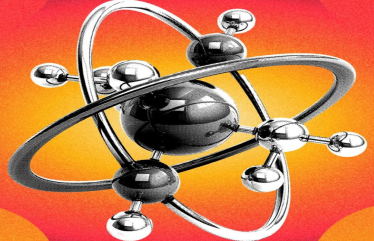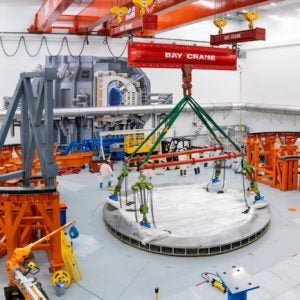
US-based fusion start-up Pacific Fusion says it has raised $900m in a Series A funding round led by General Catalyst “from the best syndicate we could ask for”. Other participants included Breakthrough Energy Ventures and an A-list group of individual investors, including Citadel founder Ken Griffin, Stripe co-founder Patrick Collison, venture capitalist John Doerr and Mustafa Suleyman, the head of Microsoft Corp’s consumer AI business. Pacific Fusion also mentioned Elad Gil, Eric Schmidt, Lachy Groom, Leitmotif, Lightspeed, Lowercarbon Capital, Reid Hoffman, Richard Merkin, and Trousdale Ventures. General Catalyst’s Hemant Taneja, former Google CEO Eric Schmidt and Collison joined the company’s board of directors. “We structured the round in a unique way: The funding is all committed upfront (to mitigate financing risk), and it’s unlocked as we achieve predefined milestones (to ensure accountability).
The investment highlights the intense interest in nuclear energy, driven in part by the massive power demands of artificial intelligence, Bloomberg noted. Pacific Fusion’s funding will come in stages, based on the company meeting certain milestones, according to a company blogpost.
Pacific Fusion is based in Fremont, California was established in 2023 and says it is developing high-gain pulsed magnetic fusion. Company’s President & Co-Founder Will Regan was formerly at Alphabet Inc’s X “moonshot factory” that undertakes exotic projects. At Alphabet, Regan worked on projects such as Mineral, an agriculture-technology business. Co-founder and Chief Technology Officer Keith LeChien previously worked at the US Lawrence Livermore National Laboratory (LLNL) and the National Nuclear Security Administration (NNSA).
According to the company website, it is hiring staff for 16 positions in addition to the 44 people already employed. Pacific Fusion was started with a clear mission – “to power the world with abundant, affordable, clean energy”.
The website says: “Global energy demand continues to soar, as people around the world seek to improve their quality of life. As we expand power production to satisfy this growing need, the world must also shift to cleaner energy, decoupling economic progress from the consequences of climate change. Many power sources – solar, wind, hydro, geothermal, fission, and others – have important roles to play in this transition. Fusion has enormous potential.… Fusion could be the ideal power source – emitting no CO2, requiring far less materials and land than other power sources, and offering billions of years of nearly free, globally accessible fuel. The challenge is making affordable systems to use that fuel.”
Recent advances enable affordable fusion systems. In the last two years, breakthroughs in inertial fusion and pulsed power have opened a path to affordable fusion power. “We launched Pacific Fusion to build on these advances and create the world’s most sustainable and affordable on-demand power source.”
The company says it is pursuing a pulsed magnetic path to inertial fusion – “that is, using fast-rising, high-current pulses to magnetically squeeze and heat small containers of deuterium-tritium fuel, driving the fuel to fusion conditions”. It claims to build on established science.
In 2022, breakthroughs in inertial fusion showed the conditions required for ignition and high gain. The National Ignition Facility at LLNL used lasers to achieve ignition and the highest laboratory fusion performance ever. The Z Machine at Sandia National Laboratories (SNL) used fast-rising current pulses to drive the MagLIF concept to achieve the highest pulsed magnetic fusion ever, second only to laser-driven concepts. This was the culmination of over a half century of US government support and hard-fought progress by fusion researchers.
“We are building a fast pulser, similar to Sandia’s well-proven Z Machine. Our pulser is made efficient and compact thanks to decades of advances in pulsed power engineering – especially the recently-demonstrated impedance-matched Marx generator (IMG). In 2022, LLNL first demonstrated this advanced IMG technology, opening an efficient and affordable way to reliably achieve inertial fusion conditions.”
Pacific Fusion says its system is built of small mass-manufacturable units called bricks (two capacitors and a switch), which are assembled into modules that fit into shipping containers. “Our fusion chamber is compact and cylindrical, facilitating low-cost maintenance. Our system is built from widely available materials. And, our fuel is vastly cheaper than fossil fuels, even accounting for consumables such as fuel containers.”
The immediate goal is net facility gain. The funding is being used to build a high-gain pulsed magnetic fusion driver to achieve net facility gain’(more fusion energy output than all stored energy input). “In parallel, we have started engineering the components and systems needed for affordable commercial fusion systems. We have a clear path toward achieving these goals, and we’re well on our way to completing our first major milestones.”
We cannot power the planet by working alone. We are committed to collaborating with the broader scientific community. We will regularly share and publish our research so others can scrutinize and build on our findings, just as we build on theirs. We are equally committed to partnering with communities, regulators, policymakers, suppliers, industry peers, and customers as we make commercial fusion a reality together.
Will Regan’s experience at the US Department of Energy’s (DOE’s) Advanced Research Projects Agency-Energy (ARPA-E) includes developing the Accelerating Low-Cost Plasma Heating & Assembly (ALPHA) Program. His time founding the Mineral project at X, the moonshot factory gave him experience leading cross-functional teams working to achieve breakthrough engineering milestones.
Keith LeChien led pulsed magnetic fusion at LLNL and served as the Director of Inertial Confinement Fusion at NNSA making him one of the leading experts in pulsed magnetic fusion. He is also one of the inventors of the Impedance-Matched Marx Generator (IMG), a technology that significantly influenced Pacific Fusion’s approach and architecture.
Other staff include Leland Ellison, a former computational physicist at LLNL and Head of Simulation & Modelling at Pacific Fusion. Nathan Meezan spent over 20 years at LLNL leading target design teams and is now Head of Target Design at Pacific Fusion. Alex Zylstra, principal experimentalist responsible for achieving ignition on NIF, is now Head of Experiments at Pacific Fusion.






